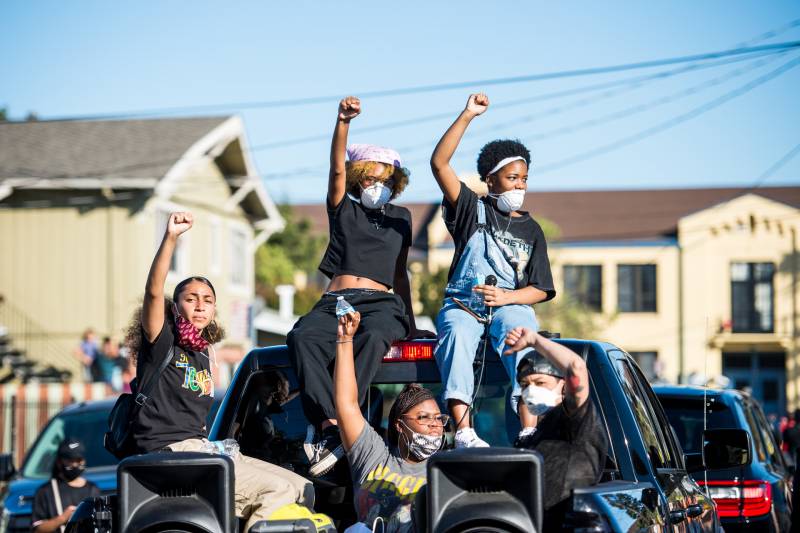Activists, led by the group Black Organizing Project, have been pushing to get police out of Oakland schools for nearly a decade, since a black student named Raheim Brown was shot and killed by a school district police sergeant.
The Project’s director, Jackie Byers, said she sees an opportunity in this moment “to redefine community safety in our schools, to reinvest in our schools, to reinvest in our students and to be a model for this entire country of what is possible.”
During Wednesday night’s virtual school board meeting, and at a press conference held by activists beforehand, dozens of educators and community members voiced their support for the resolution, arguing that having police in schools does more harm than good.
“We’re overdue to transform the idea that in order to keep our schools safe we need to police our young people,” said Sagnicthe Salazar, director of restorative discipline at Elmhurst United Middle School. He added that schools should stop partnering with “a force that historically, and on the daily, inflicts fear and terror on our young people and their families.”
Many at the meeting echoed the sentiment that police presence creates a climate of fear in schools and leads to trauma; others referenced the school to prison pipeline and disproportionate arrests of students of color — 73% of district students arrested are black according to a 2019 platform document by the Black Organizing Project, while only roughly a quarter of the district’s students are black.
Mirroring national calls to defund police, supporters argued that OUSD should invest its money in supportive services like school social workers, psychologists and restorative justice practitioners — services that could better get at some of the root causes of behavioral issues while keeping students out of the criminal justice system. Many pointed to painful budget cuts the district faces to lend urgency to the case.
“We as adults who are managing the budget — we’ve got to get behind these students, we’ve got to fund education, not police,” said OUSD school board member Roseann Torres, who introduced the resolution named in honor of George Floyd with board vice president Shanthi Gonzales.
Their proposal would eliminate the district’s internal police force and its 10 sworn police officers. Those armed officers cost OUSD about $2 million dollars a year, and the proposal calls for the savings to be reinvested in student support services.
The Oakland teachers’ union is backing the resolution and over 50 school administrators signed on to a letter supporting it. “Some will say that the OUSD Police Department is necessary because it is used,” it reads. “When school leaders are given only a hammer, they will treat every problem like a nail. Greater investments in school-based support staff will both reduce the need, and the desire, to utilize police as a response to disruption or disorder.”

